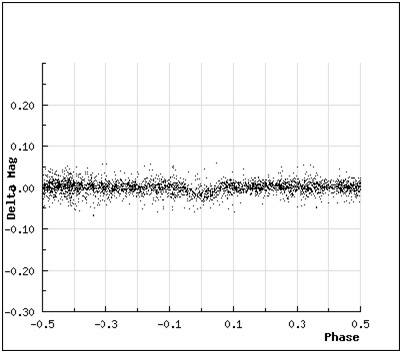Since the dawn of man, the origin of life has always been debated time and time again. Whether its religion, pseudoscience or Darwin’s Theory, the origin and evolution of life still remains largely in question. Although there are many hypotheses, few have been tested well enough to bear the name of an accepted theory. As humanity develop a better scope of the world we live in and the technology to explore it, we began to search for life outside of mother Earth. We do so in hope that by finding and learning about life outside our world, we will be able to discover more about ourselves. As we reach beyond our Solar System, we looked for other Earth-sized planets, since the only assumption we can make is that a planet as big as Earth within the habitable zone of its host star could maintain life. We ourselves is the very proof of that statement. Planets outside of our solar system are thus called exoplanets, short for extrasolar planets. Searching for other life forms on exoplanets may sound like a walk in the park, but even the study of the study of life is an art to itself. There many ways searching for a planet: direct imaging, transits and eclipses, microlensing, Doppler effect, Pulsar timing and perhaps half a dozen more.
The planet introduced in this paper is WASP-12b. It is roughly 870 light-years away from us in the winter constellation of Auriga. It was discovered in 2008, by the UK’s WASP, Wide Area Search for Planets. The WASP surveyor uses transit methods to search the skies, detecting drops in light signatures as a planet passes in front or behind a star. Each star exerts a consistent and stable amount of energy, demonstrated in its luminosity. When a planet passes in front of the star, between our line of sight, it diminishes the light signatures of the sun. (http://www.superwasp.org/wasp_planets.htm) (all data regarding WASP-12 and WASP-12b from superwasp.org)
Basically, if the star is a light bulb and the planet is a pebble, we are trying to detect the “shadow” that the pebble casts when it is placed in front of it. The graph above is the light curve of WASP-12 as WASP-12b transits it. Note the slight drop in the middle of the graph. This is how WASP-12b was discovered. Since WASP-12 is a G-star, a relatively low-mass star, it will slowly grow bigger and more luminous, becoming a giant. When it completely fuses all its hydrogen into helium, it will change into a white dwarf.
WASP- 12b orbits around its star WASP-12. WASP-12 is a G0 star with a luminosity of 1.26 that of our Sun’s. It is 60% large than our Sun is (1.58 Solar Radii) and 30% heavier (1.29 solar masses).[1] Since the Sun is a G2 star, WASP-12 is slightly hotter than our Sun is, with our Sun being 5800 K and WASP-12 being 6350K. The most special phenomenon about the relationship of WASP-12 and WASP-12b is that WASP-12 is slowly absorbing WASP12-b. Since stars grow over time, WASP-12 is slowly growing into WASP12-b’s orbit. Given their minimal distance between the sun and the planet, it gives WASP 12-b incredible temperatures, perhaps even one of the hottest hot Jupiters we have discovered. WASP 12-b is much bigger than Jupiter, with a 1.83 Jupiter radii and 1.39 Jupiter masses. Since it orbits its star at an extremely close distance of 0.0226 AU, it has an incredibly short orbital period of 1.091 Earth days. this means that it takes a little more than one Earth rotation for WASP 12-b to complete a full orbit of its star.
Given the extreme conditions of WASP-12b, it is highly unlikely that WASP-12b would habit any life at all. The following equation is used to find the surface temperature of WASP-12b:

Solving for SurfaceTemp in the above equation, the surface temperature appears to be 1800 K. Note that this equation does not include the tidal heating caused by WASP-12b’s immediate distance to the WASP-12. Taking the tidal heating into account, WASP-12b would be superheated to 2560 K. This is extremely hot, also the first piece of evidence that suggest that life could not on this planet. One of the most important requirements for life, water, could not exist in its solvent form at this temperature.
To further show that WASP-12b is not habitable, we will now show the habitable zone of WASP-12 and that WASP-12b does not lie within that boundary. The habitable zone equation will be used to find the inner and outer edge of the habitable zone of the star WASP-12.
Since the luminosity of WASP-12 is 1.26 times that of our Sun’s, we get Dinner as 1.07 AU and Douter as 1.57 AU. The width of the habitable zone is thus 0.50 AU. WASP-12b is only 0.0226 AU away from its star WASP-12, so it clearly does not lie within the habitable zone of its star.
With regards to life on WASP-12b, it is true that it is far too hot for life as we know it to exist. WASP-12b, a hot Jupiter also has no solid surface, especially since the tidal heating from its star causes it to warp into an “egg” shaped planet. The heating also causes WASP-12b’s atmosphere to expand. But one thing about its composition does interest us. Among most hot Jupiter exoplanets that we’ve found have had a 1:2 carbon-oxygen ratio. But on WASP-12b, carbon-oxygen ratio was 2:1, twice the concentration of what it is normally. Moreover, its methane concentration is 100 times that of what astronomists speculated. Carbon and methane concentrations are important to us because life is carbon-based and methane is a by-product of life. Even though life may not exist on WASP-12b, another planet without its system would have similar composition. If such a planet does exist within the habitable zone of WASP-12, it may as well inhabit life.
If the life does exist on WASP-12b, they would mostly live in the higher atmosphere where water vapor could exist. They would have to be large, buoyant bodies that can regulate its altitude at will in case of the solar winds. They may be large creatures resembling jelly fish, but could inflate themselves to the size of a blimp. Since the planet is 870 light-years away, it would take far too long for us to get there with our current technology, we may never have a real image of WASP-12b being eaten away by its star. Overall, WASP-12b is a fascinating discovery and confirms a phenomenon that scientists have long suspected, but had not been able to confirm with legitimate data.
BIBLIOGRAPHY
http://www.superwasp.org/wasp_planets.htm
http://www.nasa.gov/mission_pages/hubble/science/planet-eater.html
http://en.wikipedia.org/wiki/Stellar_classification
http://en.wikipedia.org/wiki/WASP-12http://content.time.com/time/health/article/0,8599,2035754,00.html











